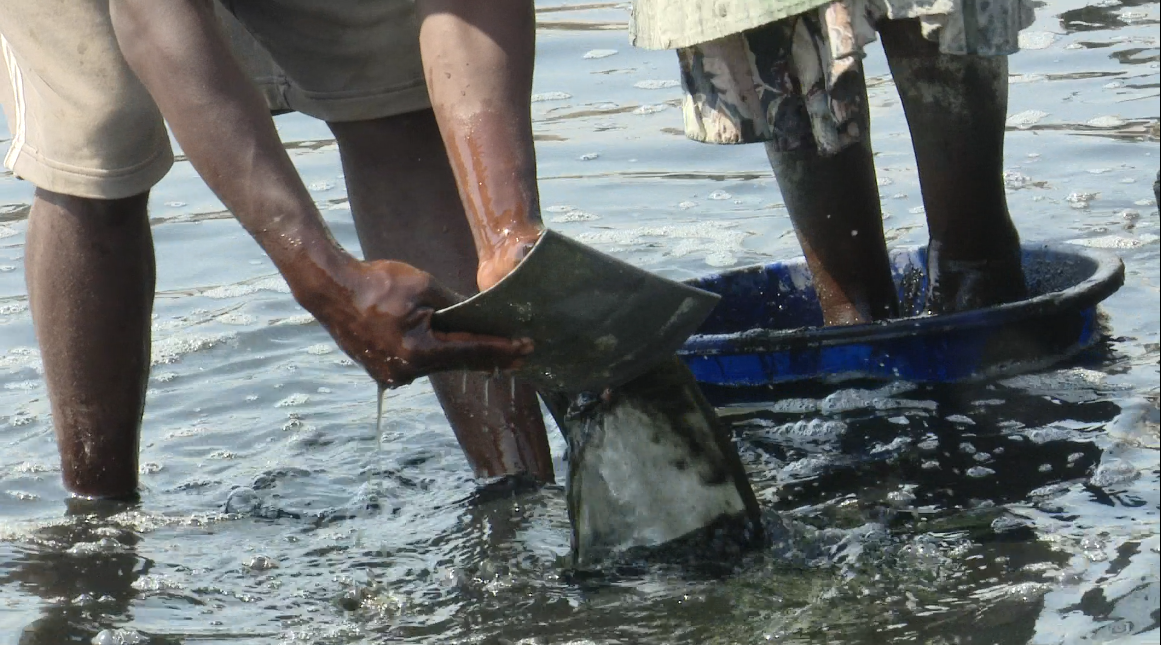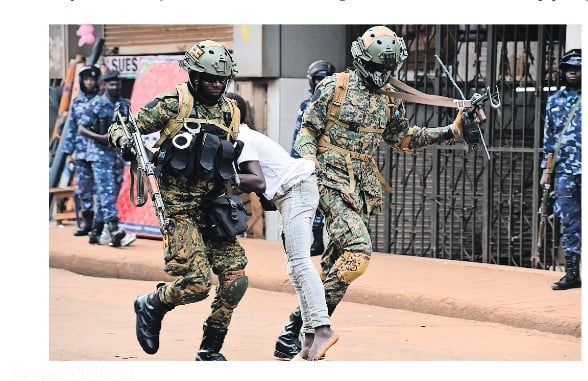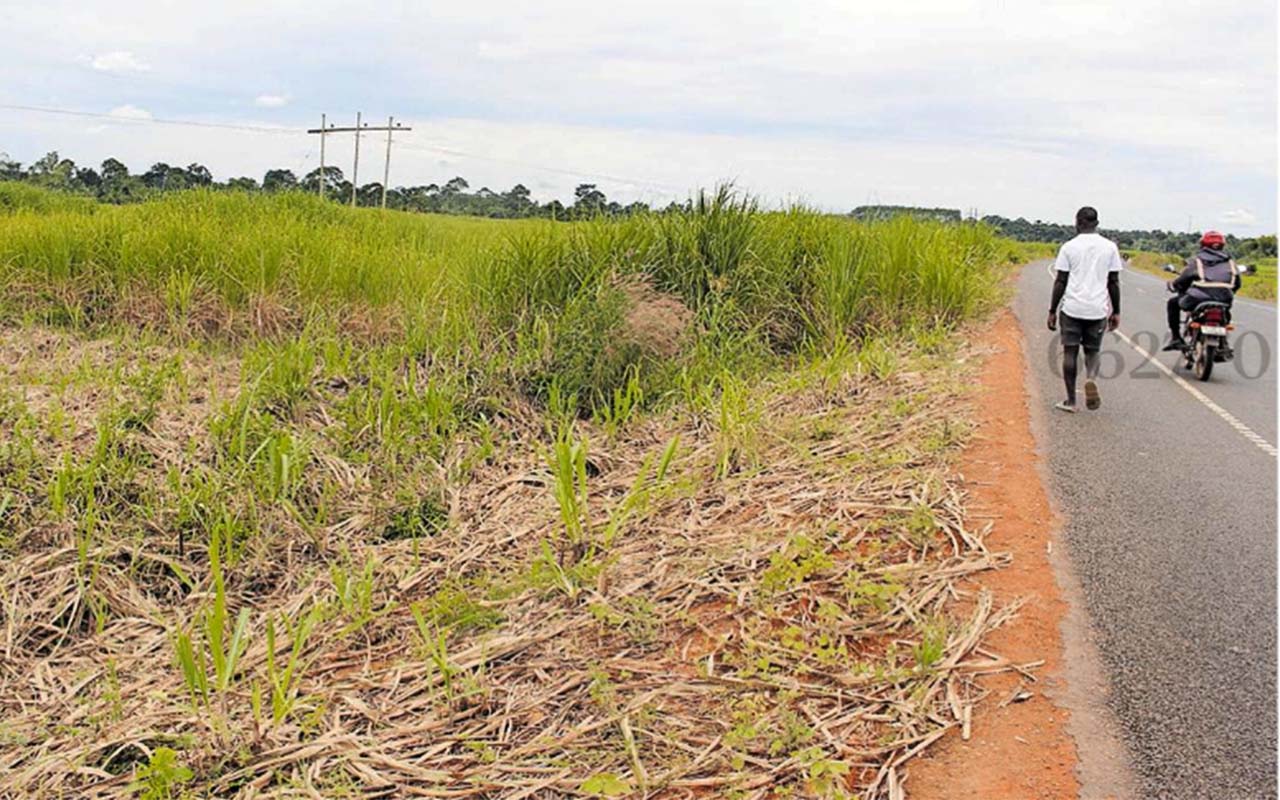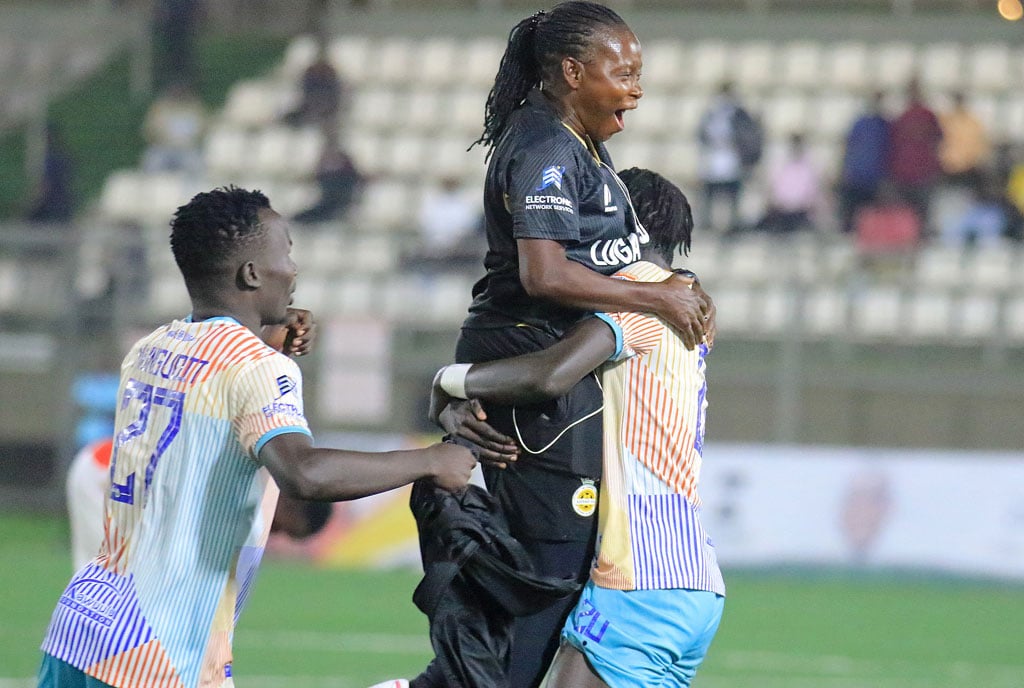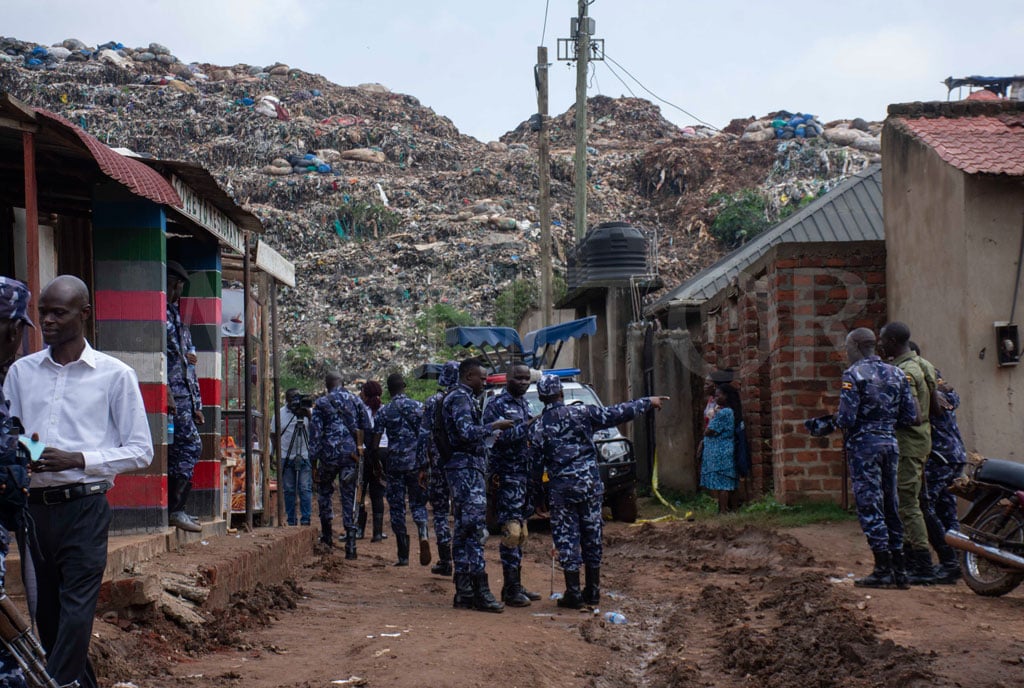
Simeon Odongo. Photo by Michael Kakumirizi
I was working at Mbuya as part of the intelligence unit by the time Yoweri Museveni and his loyalists merged with ex-president Yusuf Kironde Lule’s group (Uganda Freedom Fighters) in 1981 to form the National Resistance Army (NRA) shortly after the bitterly disputed 1980 general election.
It was on January 6, 1981, while I was attending a meeting with then vice president Paulo Muwanga that information of Museveni, a former Military Commission member, declaring rebellion, reached us.
We had previously got reports and squashed the four different such groups that had emerged with declared intention to fight and disorganise the new Milton Obote II regime.
I had only met Museveni once and we never got acquainted much, but we knew he was a very experienced and seasoned fighter with guerrilla war experience.
Mr Museveni had participated in the December 1980 general election on the Uganda Patriotic Movement (UPM) party ticket, and I remember meeting Eriya Kategeya and Dr Ruhakana Rugunda; Museveni’s best mobilizers in the fight, a week before they jumped into the bush.
As they regrouped west and southwest, Mbarara, especially Kazo, became their main recruitment area immediately before advancing and laying a foundation in the Luweero Triangle.
I had worked in Mbuya with a colleague named Kamuntu, he knew many of the 27 NRA fighters who pioneered the bush war and through Kamuntu, I discovered a lot [about the new rebel group].
A few weeks after Museveni had declared a rebellion, I relocated to Masaka from Kampala to coordinate UNLA intelligence.
On the third day in the area, while riding to Katigondo, a seemingly informed man in his 40s stopped me and said some armed men were involved in an accident north of Katigondo.
A vehicle, in which they moved, got a puncture and unfortunately, they did not have a spare tyre.
We were very few at our base and very divided, so we failed to mobilize immediately for a chase. The next day, I also learnt that while going to Masaka town the previous night, I had unknowingly interacted with Museveni and his team as they looked for help in trying to fix their broken tyre.
The next morning of February 6, there was the famous attack on Kabamba; but the rebels did not raid much weapons as they had planned.
The Kabamba attack was the signal that set us on our toes, a confirmation that Mr Museveni and his men were serious.
I led an eight-man team to Kabamba on February 7, but realised they (NRA) had very few guns although they even failed to manage them.
That evening of February 7, we confronted the group who had moved less than 40km from Sembabule town. Although they had divided up -less than a platoon - and had only seven guns but the others, unarmed, attacked our men and took away weapons from them.
An intelligence report at my unit received on February 8, 1981, indicated that the NRA carried away an RPG launcher without a shell but had more guns than the day they attacked Kabamba; this was after their attack on a UNLA establishment in Kiboga and were retreating.
It was on July 4, 1982, at dawn when I came face-to-face with the rebels for the first time. I had come to Kampala and set off aboard a pick-up truck to Matuga in Wakiso with two other colleagues to check on a close friend who lived there and had just undergone an operation at Mulago Hospital.
Hardly 700 metres from our checkpoint at Wandegeya junction, now Yusuf Lule road, were we attacked.
Our vehicle was fired at in an ambush from about 100 metres away. I rolled under one of the nearby trucks parked almost in the middle of the lane.
Our driver was killed from a shot in the neck and the other colleague was shot dead as we took cover.
As I lay under the truck, I realised that my faded blue, checkered collar T-shirt was soaked with blood. I continued taking cover under the truck with the morning breeze freezing me up as I waited for my turn [to be killed] thinking the rebels had seen me.
I realised the blood on my shirt was dripping from the truck that was covered with fresh tree branches. The truck, I realised, was loaded with dead bodies.
With ambushes here and there, there were so many of our soldiers and those of the NRA who died and were ferried on trucks covered with tree branches and the smell of rotting bodies filled the air; something quite demoralising.
At that time, it was safer to travel at dawn because the enemy (NRA) ambushes were usually withdrawn by then, but I think that day we had bad luck.
As daylight rose, the trucks set on the move, but to avoid being seen and getting killed, I clung to the rails of the truck’s body from under it while it drove off, escorted by two separate vans loaded with armed men (but not in combat) towards Bombo with the dead bodies.
They did not drive in a straight direction after reaching Matuga, they would branch and drive through surrounding villages and later join the main road to avoid possible ambush, and while they approached a swamp at Matuga, I jumped off into the muddy waters that they drove through and later walked back to Kampala.
The NRA at this time would attack or ambush but with very few guns.
It was already clear to the few of us in command why we would lose a fight involving militias who were not well armed.
The group that attacked Kabamba where they took away 13 guns, had less than 40 soldiers in all but had grown to at least two battalions by 1983, and yet they did not have enough guns to properly attack the UNLA forces.
The NRA force expected weapons from their well-wishers outside the country but when this appeared to take them too long, they resorted to ambushing our forces and looting our logistics.
The evening of April 6, 1981, was my worst day, we had a well-worked out plan to attack them but this was leaked to the NRA by some of our own colleagues.
The attack was foiled, and when we descended on them, we only recovered three guns before they attacked Kakiri Military Barracks the next morning, an establishment located where the current 1st Division headquarters sits.
At Kakiri, we were reorganized, and the two-hour exchange was too heavy for them but they managed to get away with 11 guns and a mortar.
What was surprising was that, their fighters had grown to more than 250 but with guns less than 30 per cent of their number.
We regained moral and immediately regrouped after the Kakiri incidence. We attacked them around Katera days later and recovered almost all the spoils from our Kakiri barracks.
The Katera fighting was devastating to the NRA. We fought them hard and better and they lost more guns to us.
The NRA attached too much value to a gun and anyone who lost a rifle was subjected to a third degree interrogation by their superiors.
Scaled-up attacks in Kampala
A section of the NRA in Luweero Triangle attacked Masindi Barracks in February 1984 where they took more than 600 guns with only half of them armed, this was a big boost to them. And at the beginning of 1985, the NRA attacked Kabamba once more and took more than 600 rifles.
In mid-1985, I had been redeployed to Kampala when Museveni and his rebels got a delivery of about 750 rifles and unknown rounds of ammunition. The weapon consignment was external support by the Libyan government to about 500 different militia groups.
With this reinforcement, the NRA started advancing towards Kampala and had sized parts of Mbarara and Masaka.
But the UNLA soldiers, who had regrouped to the north, resumed attacks on Kampala by June 1985. Sickened by increasing bloodshed, Gen Tito Okello, I was informed, was descending upon Kampala, a move to topple Obote’s regime and later negotiate with Museveni’s NRA and hand over power to them.
The advancement to Kampala under Gen Okello’s command was intended to have Obote ousted by August but on July 29, 1985, Gen Okello and his men had taken over Kampala.
When Gen Tito Okello announced on Radio that president Obote had been overthrown, I immediately went to visit my ailing family back in Gulu. Although they never wanted me to get back to the battlefront, I sneaked and returned to Kampala but things had taken a turn for the worst.
Although Gen Tito Okello had expected calm after the overthrow of President Obote, the situation got even worse.
The attacks intensified towards September 1985 since the number of guns, mortars and other special weapons had increased. Attacks on our vehicles increased and it became impossible for us to manoeuvre through Wobulenzi to Nakaseke while we continued to lose more guns to the NRA rebels in Masaka and Mbarara.
While in Kampala, armed with mainly 14mm, 23mm AAs, 37mm guns and medium-range mortars and commanded by Kasirye Ggwanga, the rebels overpowered the might of our artillery units that was situated on Kololo hill.
I lived in Nakawa, Kampala, and major food supplies to the city had been cut. In central Kampala, I witnessed bank robberies, kidnaps and unusual trend of silent killings while parts of the city remained in the hands of several fighting groups.
In December, towards Christmas period, I got ill and went home when I was relieved of duty. It was a time when a number of UNLA soldiers started fleeing while many were killed in Kampala and in other parts of the country.
HIS VIEW OF THE EVENTS
Trained in Kenya, Madagascar, and Khartoum, Odongo, who deserted and fled back to his village to hide from Amin’s forces in 1971, was among those who regrouped in 1979 in Tanzania to topple Amin’s forces.
He says this about his then government:
As an army, we were strong but in between the battles, we lost track. Ethnic tension and confusion fractured us systematically; the Langi, Acholi and West Nile components of our army had started fighting one another.
President Obote, a Langi, was always accused of favouring his tribes mates more than the others both in government and military leadership such that even at battle fronts, we failed to achieve our goals.
Museveni had since Obote’s overthrow refused to heed to calls by Gen Tito Okello to join him but instead mounted more attacks, especially after the Nairobi peace talks did not yield fruits.
Gen Tito Okello had announced that Uganda would be governed by a Military Council for 12 months before general elections; we tried to forge a coalition government with the various political parties, but failed to convince the NRA, who continued to fight us.
Museveni had several issues that he wanted solved before joining Gen Tito Okello and his coalition government and when the Nairobi Peace Talks failed, Museveni and his men resumed attacks and the roads to Masaka, Mubende, Mbarara and Katonga were shut down.
Things fell apart irrecoverably and by January 25, 1986, Museveni’s men marched onto the capita, Kampala, thereby completing the rout of the UNLA.
Continues next Saturday

